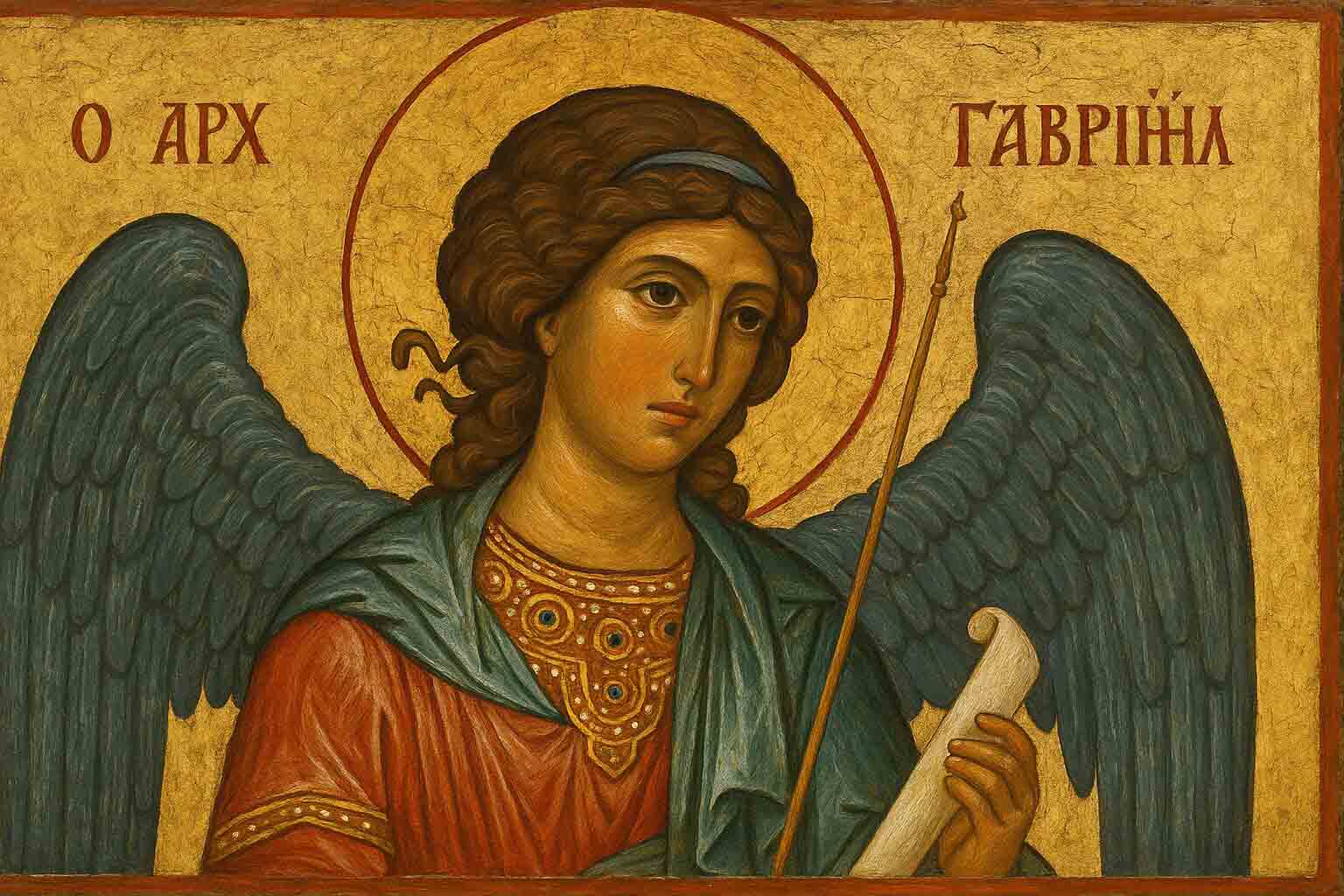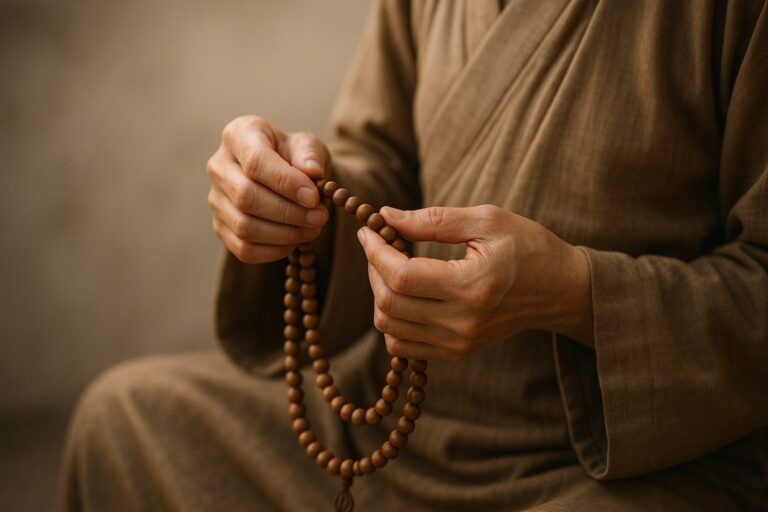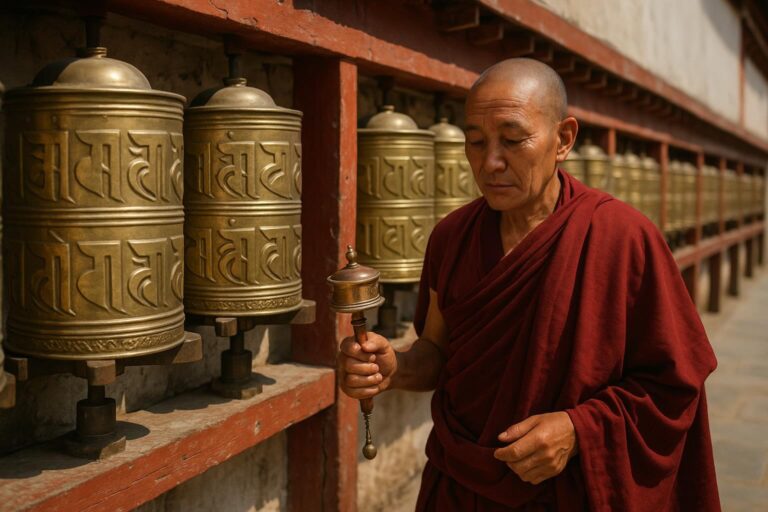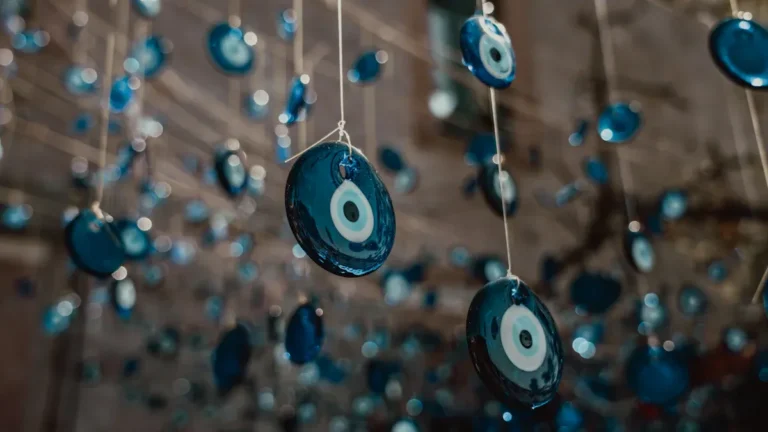17 Symbolic Meanings of the Archangel Gabriel Icon
In this article
- 1 Introduction to the Archangel Gabriel Icon
- 2 Importance of Icons in Christian Art
- 3 The Unique Role of Archangel Gabriel in Theology
- 4 Historical Origins of the Archangel Gabriel Icon
- 5 Symbolism and Attributes in the Archangel Gabriel Icon
- 6 Liturgical and Devotional Uses of the Gabriel Icon
- 7 Modern Interpretations and Artistic Styles
- 8 Preservation and Display of Historic Gabriel Icons
- 9 Frequently Asked Questions about Archangel Gabriel Icons
- 9.1 What does the lily symbolize in Gabriel’s icon?
- 9.2 Is the Archangel Gabriel icon used in Catholicism and Orthodoxy?
- 9.3 Where is the most famous Gabriel icon displayed?
- 9.4 What makes an icon of Gabriel different from other angels?
- 9.5 Can you pray to Archangel Gabriel using an icon?
- 9.6 How are Gabriel icons made or written (painted)?
- 10 Conclusion: The Enduring Power of the Archangel Gabriel Icon
Introduction to the Archangel Gabriel Icon
The Archangel Gabriel icon stands as one of the most cherished and symbolic images in Christian art. Known as the divine messenger, Gabriel plays a pivotal role in key biblical events, particularly the Annunciation to the Virgin Mary. Icons bearing his image are not merely artistic portrayals—they are sacred windows into the heavenly realm, brimming with theological meaning, tradition, and spiritual power.
Across Orthodox, Catholic, and even some Anglican traditions, Gabriel is depicted with reverence and intricate symbolism. The purpose of these icons is not just decoration but veneration, teaching, and inspiration. Let’s begin by exploring why icons, especially of Archangel Gabriel, hold such a significant place in the Christian faith.
Importance of Icons in Christian Art
Icons are often described as “theology in color.” Unlike typical paintings, icons follow strict guidelines and spiritual practices that date back to the early church. They are not “created” in the usual sense—they are “written,” reflecting divine inspiration.
Through icons, believers encounter saints, angels, and divine events visually. These sacred images are tools for meditation, prayer, and understanding the mysteries of the faith. And when it comes to angelic beings, none are more central than the image of Gabriel.
The Unique Role of Archangel Gabriel in Theology
Archangel Gabriel appears prominently in both the Old and New Testaments. From announcing the birth of John the Baptist to proclaiming the coming of Jesus to Mary, Gabriel is always the harbinger of divine news. His icon reflects these roles with rich symbolism—every element, from the objects he holds to the colors he wears, has meaning.
Gabriel is also honored in Islam as Jibril, the angel who revealed the Quran to Muhammad, adding to his cross-religious significance. However, in Christian iconography, he remains closely tied to messages of hope, purity, and divine intervention.
 Historical Origins of the Archangel Gabriel Icon
Historical Origins of the Archangel Gabriel Icon
Early Christian Depictions
The earliest known representations of Archangel Gabriel appear in 4th-century Christian art, such as frescoes in Roman catacombs. These were simple, often symbolic images meant to affirm the angel’s presence in sacred narratives.
Byzantine Influence on Gabriel Iconography
By the 6th century, Byzantine art had developed highly stylized forms of iconography. Gabriel often appeared in mosaics with a youthful, androgynous face, symbolizing heavenly beauty and immortality. His clothing—typically a white tunic with golden highlights—reflected purity and glory.
Russian Orthodox Traditions and Styles
In the Russian Orthodox tradition, Gabriel’s image gained even more detail and reverence. Russian icons often portray him with a solemn expression, holding a scepter or a scroll, emphasizing his role as a divine communicator. These styles became models for future iconographers throughout Eastern Europe.
Symbolism and Attributes in the Archangel Gabriel Icon
Halo and Wings: Representation of Divinity and Speed
Gabriel’s halo is a sign of holiness, a standard feature in depictions of divine beings. His wings symbolize swiftness and the ability to traverse the divine and earthly realms—marking him as a true messenger from heaven.
Scroll or Lily: Messages of Purity and Divine Communication
Often, Gabriel is shown holding a scroll, representing the Word of God, or a lily, symbolizing Mary’s purity and the immaculate nature of Christ’s conception. These attributes tell the story of the Annunciation without words.
Colors and Robes: Symbolic Meanings in Icon Painting
Blue, representing the divine, and white, symbolizing purity, are dominant in Gabriel’s robes. Sometimes gold is used to signify heavenly light and grace. Each color choice enhances the icon’s spiritual message.
Facial Expression and Posture: The Messenger’s Demeanor
Gabriel’s face is serene yet powerful—calm but commanding. His gaze often looks outward, engaging the viewer directly, inviting meditation. His body is usually inclined slightly forward, showing his role as one who brings divine news.
Liturgical and Devotional Uses of the Gabriel Icon
Role in Church Festivals and Feast Days
Gabriel is commemorated in various Christian calendars. In the Eastern Orthodox Church, March 26 is dedicated to the Synaxis of the Archangel Gabriel, following the Annunciation on March 25. Icons are central to these celebrations, placed prominently for veneration.
Placement in Iconostases and Home Altars
In Orthodox churches, Gabriel’s icon is often found on the iconostasis, the screen separating the sanctuary from the nave. He usually appears alongside the Virgin Mary, emphasizing his role in the Annunciation. Devout families also keep his icon on home altars for personal prayer and protection.
Prayers and Veneration Practices
Faithful believers offer prayers to Gabriel seeking clarity, guidance, and divine insight. The icon becomes a focal point, believed to bring the intercessory presence of the Archangel into the believer’s life.
Modern Interpretations and Artistic Styles
Contemporary Iconographers’ Approaches
Modern iconographers respect traditional methods but also introduce subtle innovations—experimenting with minimalist lines or mixed media while maintaining spiritual depth. Gabriel remains a popular subject, symbolizing light in a troubled world.
Differences in Eastern and Western Depictions
In Eastern traditions, Gabriel appears serene and idealized. In Western art, he may be shown more emotionally expressive, especially in Renaissance paintings like those of Fra Angelico or Leonardo da Vinci. Still, both traditions underscore his divine mission.
Influence in Digital and Popular Culture
Today, Gabriel’s image appears in films, books, and video games—often with wings and a glowing aura. While these depictions lack theological precision, they show the enduring impact of the archangel gabriel icon on global culture.
Preservation and Display of Historic Gabriel Icons
Museum Collections and Restoration Efforts
Historic Gabriel icons are housed in places like the Tretyakov Gallery in Moscow or Mount Athos monasteries. Experts use techniques like digital scanning and pigment analysis to preserve their beauty for future generations.
Pilgrimage Sites Featuring Iconic Representations
Notable pilgrimage destinations include the Church of the Annunciation in Nazareth and St. Michael’s Monastery in Kyiv, where believers venerate ancient Gabriel icons as sacred relics.
Academic Studies and Iconographic Analysis
Scholars study Gabriel’s iconography to understand shifts in theological emphasis, stylistic changes, and devotional practices. These studies deepen appreciation for the icon’s complexity and sacred function.
Frequently Asked Questions about Archangel Gabriel Icons
What does the lily symbolize in Gabriel’s icon?
The lily represents purity, often associated with the Virgin Mary. It also symbolizes the peaceful nature of Gabriel’s message during the Annunciation.
Is the Archangel Gabriel icon used in Catholicism and Orthodoxy?
Yes, both traditions venerate Gabriel, though iconography is more prevalent in the Eastern Orthodox Church. Catholic depictions often appear in murals and sculptures.
Where is the most famous Gabriel icon displayed?
One of the most revered icons is in Mount Athos, Greece, and another is at the Tretyakov Gallery in Russia, known for its spiritual presence and artistic detail.
What makes an icon of Gabriel different from other angels?
Gabriel is usually identified by specific attributes like a scroll or lily. His calm expression and role as a messenger set him apart from warrior angels like Michael.
Can you pray to Archangel Gabriel using an icon?
Yes, many believers pray before Gabriel’s icon for guidance, clarity, and help in delivering or receiving important messages.
How are Gabriel icons made or written (painted)?
Icons are created through a sacred process involving prayer, fasting, and traditional techniques like egg tempera on wood. The process is seen as a spiritual act, not just artistic.
Conclusion: The Enduring Power of the Archangel Gabriel Icon
The archangel gabriel icon is far more than a religious image—it’s a portal to divine truth, a teaching tool, and a spiritual companion. Whether viewed in a grand cathedral or a humble home, it speaks to the heart with a message of hope, purity, and divine presence. In every golden line and symbolic gesture, the icon reminds us of the power of faith, the importance of communication with the divine, and the ever-present light of God’s messengers.
Related Reading:
Prayer to Saint Uriel the Archangel: 7 Divine Benefits – SparkMart369.com
Sigil of Archangel Raphael: A Guide to Divine Healing Energy – SparkMart369.com
Archangel Michael: The Celestial Protector – SparkMart369.com
7 Archangel Samael Prayers for Protection and Strength – SparkMart369.com
Signs of Archangel Metatron You Shouldn’t Ignore – SparkMart369.com







